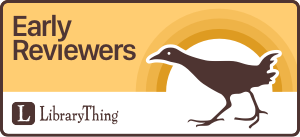
Humans have been using stones for millions of years, leaving behind such a lengthy history of artifacts that it only makes sense that not all stone structures still standing are known, or their purpose understood, by those alive today. The New England Antiquities Research Association (NEARA) is working to close that knowledge gap in their part of the world.
One of NEARA’s volunteers Walter kindly answered my questions for this month’s feature:
Who are you, and what is your mission—your “raison d’être”?
We are the New England Antiquities Research Association (NEARA), a non-profit organization dedicated to trying to discover, understand, and preserve many stone structures that can be found in the northeastern US and Canada.
Tell us some interesting things about how your library supports the community.
The library is really a research library. It has thousands of books about history, archaeology, anthropology, and geology, mostly focused on stone artifacts such as chambers, rock piles, walls, propped boulders, rock art, and mounds. Most of the books circulate to our members.
The library is also an archive. Naturally we house many of the documents accumulated from nearly 60 years of existence, including all of the journals and newsletters and a few books that we have published.
But we also hold files documenting many of the sites that have been found, and we preserve the notes and files and maps of NEARA researchers. Together they occupy many boxes and filing cabinets. These files have been valuable to today’s researchers who are out looking for sites and seeing if their condition has changed or whether they have been destroyed by modern development.
What are some of your favorite items in your collection?
I’m not sure I have a favorite item. It often feels like the next thing I pick up is the most fascinating book. Reading old site reports is exciting, giving one the vicarious pleasure of discovering new sites.
What’s a particular challenge your library experiences?
We have been in the process of digitizing our archives and providing online access to it. We have finished digitizing the site files, but there’s still a lot to be done. That work has been essential in continuing the value of the archives, because now people can use it from their home or smartphone.
Most of our membership is scattered about the New England and Middle Atlantic states, so coming to visit the library isn’t as easy as visiting your local library. Before COVID there were more visitors and our in-person conferences twice a year meant much more interaction at our book tables. The browsing experience is so important. Now everything has to be mailed, which has decreased our usage and increased our per-item work and cost. Having an online catalog and circulation system has helped. But I really would like to give our members free digital access to the volumes that we own.
What is your favorite thing about TinyCat, and what’s something you’d love to see implemented/developed?
TinyCat is great for the user. It looks nice and is easy to use. Acting as a librarian, though, I find some of the circulation and patron controls hard to use on a tablet. Also, with LibraryThing I wish it were easier to handle barcodes and perform queries and mass operations.
Great feedback! I’ll touch base with you for specifics about your tablet use, and I’ll make sure you have access to everything you need regarding barcodes, searches, and power functions.
Want to learn more about NEARA? Visit their website at https://neara.org, and explore their full TinyCat collection here.
To read up on TinyCat’s previous Libraries of the Month, visit the TinyCat Post archive here.
Want to be considered for TinyCat’s Library of the Month? Send us a Tweet @TinyCat_lib or email Kristi at kristi@librarything.com.










































































































































































